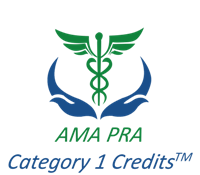Mohammed Mansi
University of Minnesota, USA
Title: The potency of Adeno-Associate Viruses in Direct Reprogramming of Astrocytes to Neurons in Stroke Models Across Three Experimental Species: Are We On The Right Path?
Biography
Biography: Mohammed Mansi
Abstract
Background data: The attempt of mouse, rat, and non-human primates transduction using retroviruses, lentiviruses and Adeno-Associated Viruses (AAV) has been utilized in the past with success seen using retrovirus and AAV in those animal species. In this study we compared AAV serotypes for expression levels of green fluorescent protein (GFP) in the cerebral cortex of adult rat, Canines, and Rhesus macaque by a developed new protocol to culture and harvest Astrocytes in vitro preceded by an in-vivo live injection into their stroke models. Followed by an in vitro experiment on human progenitor cells (HPCs) and mature human astrocytes (HA) using those same vectors. Objectives: To determine the specificity and safety profile of AAV serotypes transduction across those animal species specifically AAV serotypes AAV8, AAV9 and AAV10 on those species and human Astrocytes in vitro. Study design: this is an in-vitro and an in-vivo experimental study of direct reprograming of mature astrocytes to neurons using vector packaging specific transcription factors transduction injected into different experimental animal species. Methodology In-vitro a specific canine astrocyte culture protocol was developed using canine meningioma cells transduced with AVV free transcription factors first. After realizing that those viruses can infect canine cells. They were then used on mature canine astrocytes harvested from a live animal. Canine cortical astrocytes were cultured in an astrocyte medium on poly-l-lysine-coated flasks using an adjusted protocol. Astrocyte transductions were performed at 24 h post-plating on coated dishes. Transfected cells were cultured in human NSC medium supplemented with growth factors as per the Astro-Medium protocol. Cells were then picked for further culturing and some were fixed in 4% paraformaldehyde (PFA) for 10 min. Then they were permeabilized with 0.5% Tween-20 in PBS and then exposed to 0.1% Tween-20 with 10% horse serum. We incubated the cells with primary antibodies overnight and with secondary antibodies for 1 h when unconjugated primary antibodies were employed. Vectors were already designed and prepared in our labs and was frozen down and stored away. In-vivo a pterional craniotomy on the canine stroke model was performed. The internal carotid artery and the middle cerebral artery were then identified. Coagulation was done to the middle cerebral artery distal to the lenticulostriate vessels to preserve them. After developing a stroke in these animals a diagram model, infarct and a behavior protocol was done to determine if it’s a working model. Later, they were injected with the same vectors used in vitro. Observation is done to their neurological status and the progression in the resumption of the neurological functions lost. Euthanization is carried out later on those animals and sections of their brains were examined and fixed. Immunohistochemistry were done 3-4 weeks later after transduction. Three canine stroke models were successfully developed. The same methodology was carried out on rats/mice, and Rhesus Macaque with considerations to the distinct anatomical differences. Several rats and mice stroke models were developed with success to only one Rhesus Macaque stroke model. An in-virto experiment included the usage of AAV in transducing HPCs and HAs using three different AAVs (AAV8, AAV9 and AAV10) known from literature to be the most potent candidates for a successful robust transduction in gyrencephalic species Central Nervous Systems. Results: Cells were quantified and AAV8 were found to be a highly specific transducer in-vitro to HA (P<0.05) followed by AAV9 and AAV10 respectively, with AA10 being the least satisfactory to cause significant transduction among the AAVs on HA. AAV10 gave significant results with rats and mice in vitro (P<0.05) with mixed results in vivo (P>0.05). AAV9 gave impressive results in the Rhesus Macaque both in vivo and in vitro (P<0.05). Conclusion: AAV10 had robust results with rats and mice in vitro, with questionable results in vivo. On the contrary AAV10 were the least to react to HPCs and HA. AAV9 were abundant in the Rhesus Macaque in vitro and in vivo. AAV8 was found to be the best candidates for the transduction of canine and human astrocytes followed by AAV9. The other animal species gave mixed results when comparing in-vitro to in vivo results. Further experimentations needs to be done on those species using different transcription factors with considerable adjustment to their environmental conditions.

